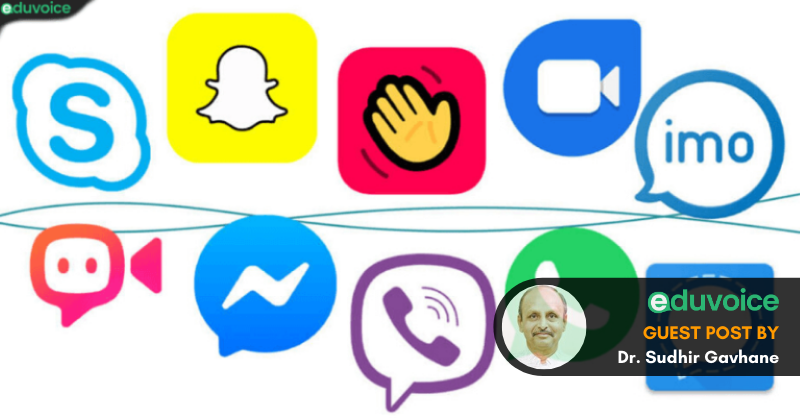I, along with my senior colleague from engineering faculty Prof. Dr. Abhay Kulkarni from MGM University Aurangabad, Maharashtra, India, has compiled select digital platforms of remote Virtual Classrooms teaching and E-learning, which can be experimented at any institution level.
If you haven’t checked out the first part of Remote Digital Teaching Tools, Click Here
Digital technological tools for remote teaching & learning methods deployable at home to continue teaching and learning process even in a more effective way during global health crisis like Covid-19 ( CoronaVirus ) pandemic. They are as follows Digital Platforms:
1. Easyclass – Learning Management System
Easyclass is a platform that allows educators to create online classes whereby they can store the course materials online; manage assignments, quizzes, and exams; monitor due dates; grade results and provide students with feedback all in one place.
2. Zoom Classroom –Video Conferencing, collaborations, virtual classrooms.
Increase student participation and learning retention with virtual and hybrid classrooms and micro-learning.
3. Microsoft Teams | E-learning Platforms
Microsoft Teams is a hub for teamwork in Office 365. Keep all your team’s chats, meetings, files, and apps together in one place.
4. Hypersay – A platform for live interactive presentations
Go beyond slides with live quizzes, live subtitles, automated feedback and many more. It is free for a maximum of 20 participants per session.
5. Nearpod– Students Engagement Platform
Interactive Lessons that can be remotely led by the teacher.
6. Google Form – For online Quiz/Test
Use google form for assessment purposes and take online quizzes. It also has features like randomization, result declaration, grading, and item analysis
7. Google Classroom – Teaching and Learning Platform
An online teaching and learning platform. A teacher can make online classrooms, upload teaching material and conduct online quizzes.
8. Edmodo – Learning Management System
Share class announcements, learning materials, and make learning accessible anywhere
9. Mentimeter – Interactive Learning Platform
Make your audience feel involved by enabling them to contribute to presentations with their smartphones and show the results live.
10. Brainpop – Educational tool
BrainPOP makes rigorous learning experiences, makes interactive presentations, videos to engage all students in the teaching and learning process.
11. Flipgrid – Video creation
Flipgrid empowers every voice from grade 1 to Ph.D. classrooms across 190 countries.
12. Edufow – Education
Make learning and teaching more effective with active participation and student collaboration
13. Video Ask by Typeform
Interactive Video Chat for remote face-to-face interactions
14. Google Hangouts Meet – Video Conferencing
Stay connected with teachers and students for teaching and learning and official academic work.
15. Youtube Videos – Uploaded Videos
You can make your classroom channel and upload your lecture videos.
16. Screen Recorders | E-learning Platforms
There are numerous screen recording videos like ScreenHunter, Camtasia screen recorder, windows screen recorder, etc. Using these tools, the teacher can make tutorial videos.
You may use synchronous mode (where the teacher is present at the same time as the learner) or asynchronous mode (where teaching materials are posted online, and learners work through them in their own time).
The faculty member can record his/her course video lectures or do a voiceover on the ppt slides and upload on any LMS or even instructors can use social media (Facebook or WhatsApp, or Youtube). You may visit this site https://techagainstcoronavirus.com/edu/ to view more useful sites addressing issues related to Carona Virus outbreaks.
If you haven’t checked out the first part of Remote Digital Platforms Teaching Tools Click Here
Frequently Asked Questions About Digital Platforms
Digital platforms are online platforms that facilitate interactions between different groups of users, such as businesses and consumers, or individuals seeking to share or access content.
Some examples of digital platforms include social media networks like Facebook and Twitter, e-commerce platforms like Amazon and eBay, ride-sharing platforms like Uber and Lyft, and content-sharing platforms like YouTube and Instagram.
Digital platforms can disrupt traditional industries by providing new ways for consumers to access goods and services, often at lower costs or with greater convenience. For example, ride-sharing platforms like Uber and Lyft have disrupted the taxi industry by providing a more affordable and accessible alternative. Similarly, e-commerce platforms like Amazon have disrupted the retail industry by offering a wider selection of goods at lower prices.

